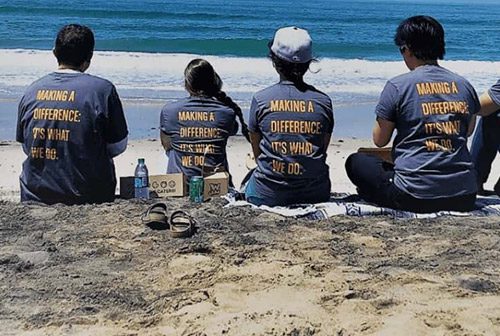6-2 Vote Paves the Way for Future Indirect Potable Reuse for San Diego
SAN DIEGO, CA – July 27, 2010 – The San Diego City Council voted 6-2 on Tuesday to approve the design, build & operate (DBO) contract for a demonstration project that will assess the potential to use highly treated wastewater to augment local reservoirs. Specifically, the $6.6M contract with Camp Dresser McKee (CDM) entails design, installation and operation of a demonstration-scale Advanced Water Purification (AWP) Facility at the existing North City Water Reclamation Plant.
The AWP will not discharge water into local reservoirs, but will test whether water treated through the facility could safely be used to enhance local drinking water supplies. If the demonstration project is successful, a full-scale project could ultimately provide up to 16 million gallons per day (MGD) of advanced treated water from the North City facility to augment the San Vicente Reservoir, a local drinking water source, as outlined in the City of San Diego’s 2005 Water Reuse Study. The City is concurrently undertaking an assessment to determine whether additional reclamation facilities could be built throughout the region to reclaim even more wastewater.
Project proponents contend that water reclamation, such as Indirect Potable Reuse (IPR), can provide a safe, reliable, drought-proof and cost effective supply of local water that will help reduce San Diego’s reliance on imported drinking water while improving the environment by decreasing sewage discharges to the ocean.
“Orange County has been safely reclaiming 70 MGD of wastewater to augment its water supplies through groundwater injection for several years,” noted Coastkeeper’s Executive Director Bruce Reznik. “The AWP will bring San Diego one step closer to following their lead and realizing our goal of water independence.”
Because San Diego would be the first City in California to use highly treated wastewater to augment reservoirs rather than groundwater, the City is required by the California Department of Public Health to undertake the demonstration project. Reservoir augmentation, though, has been done safely in other states, including Virginia since 1978, as well as internationally. The design-build-operate contract is the final step in the AWP, following Council approval of the demonstration project in 2007, approval of a rate increase to fund the project in 2008, and subsequent contracts for project management, community outreach, an independent advisory panel, and technical studies.
“We applaud the leadership and perseverance of the City Council to move this project forward,” added Reznik. “I would like to thank those elected officials who have long been advocates of water reclamation, including Council President Ben Hueso, Councilmembers Marti Emerald, Donna Frye and Todd Gloria, and former Councilmembers Scott Peters, Jim Madaffer and Toni Atkins. I would also like to thank Council President Pro Tem Kevin Faulconer and Councilmember Tony Young for taking the time to do extensive due diligence and now supporting this important project.”
The AWP was supported by the IPR Coalition, an unprecedented alliance of San Diego environmental, business, labor, economic growth, technical and ratepayer advocates that have come together to promote indirect potable reuse for the region.
“The public is becoming increasingly aware of the need to explore all options to enhance our local water supplies,” noted San Diego Regional Chamber of Commerce Chairman Tom Wornham, a member of the IPR Coalition. “If San Diego wants to continue to attract and retain leading research and manufacturing businesses, we must aggressively pursue all reliable sources of water to ensure dependable supply at pricing which does not dramatically shift from year to year.”
San Diego currently imports over 80% of its water from sources that are steadily declining, including the Colorado River and San Joaquin Delta. “The AWP is just the first step in pursuing water reclamation in the region, “concluded Reznik. “We must stay engaged in monitoring the demonstration project and, if the AWP proves successful, advocating for full-scale implementation if we are to achieve the goal of water security for San Diego.”
# # #
Founded in 1995, San Diego Coastkeeper protects the region’s inland and coastal waters for the communities and wildlife that depend on them by blending education, community empowerment and advocacy. Members of the IPR Coalition Include:
BIOCOM
Building Industry Association
Building Office Managers Association, San Diego Chapter
Citizens Coordinate for Century 3
Coastal Environmental Rights Foundation
Endangered Habitats League
Environmental Health Coalition
Friends of Infrastructure
Industrial Environmental Association
National Association of Industrial and Office Properties, San Diego Chapter
San Diego and Imperial Counties Labor Council
San Diego Audubon Society
San Diego Coastkeeper
San Diego County Taxpayers Association
San Diego Regional Chamber of Commerce
San Diego River Park Foundation
Surfrider Foundation, San Diego Chapter
Sustainability Alliance of Southern California













